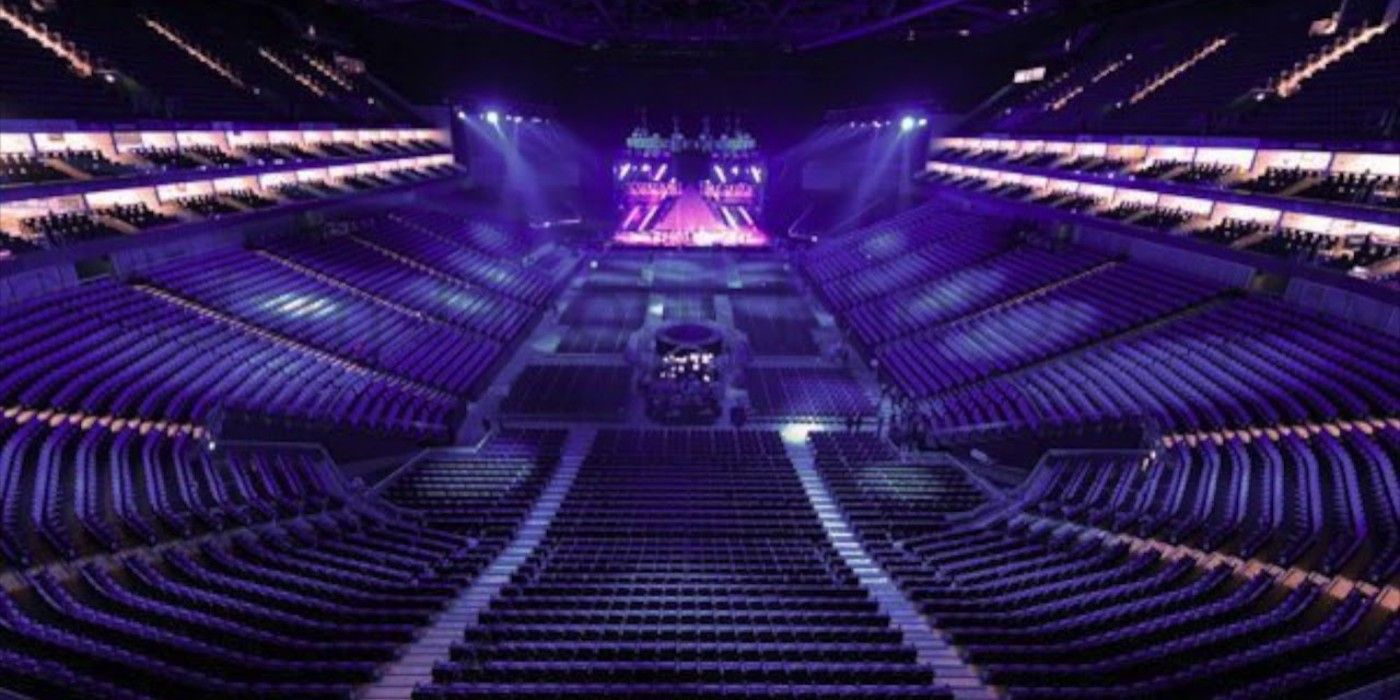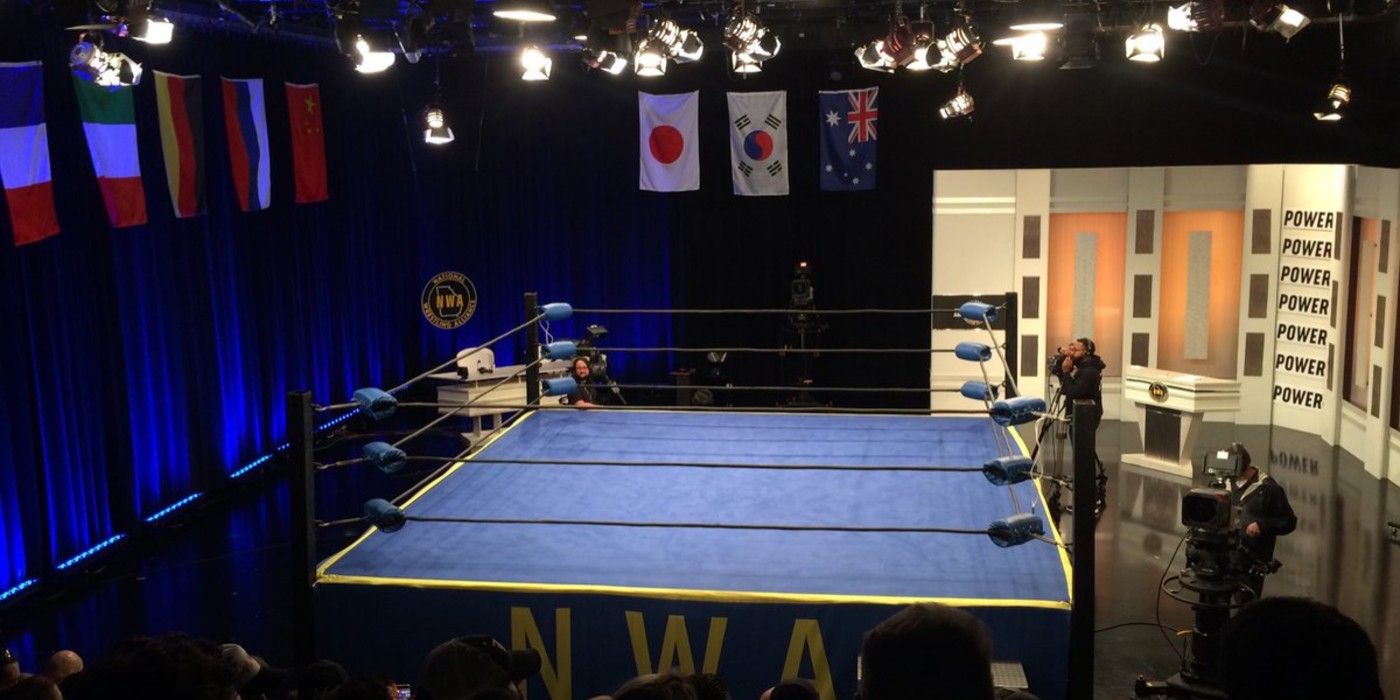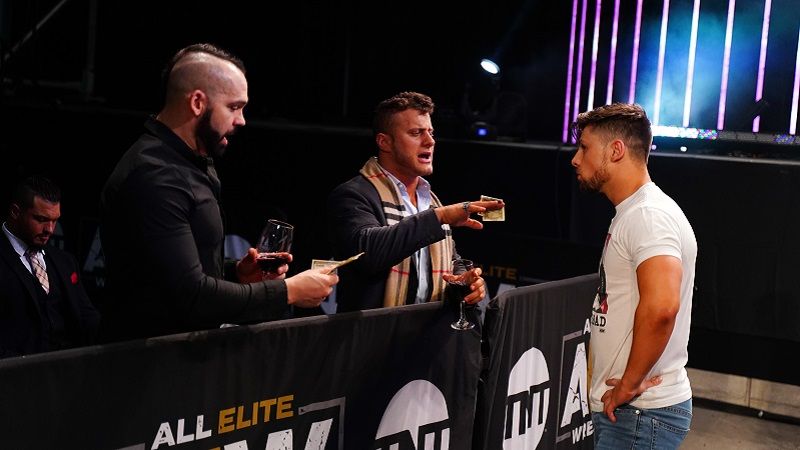The coronavirus pandemic has disrupted pro wrestling like nothing else in its history. The current crisis has necessitated a stop to all mass gatherings, including sporting events, concerts, and other forms of live entertainment. Unlike all of their competition in those areas, WWE and AEW have continued to put on shows, in (mostly) empty arenas.
Now, at a time when more and more restrictions are expected to be lifted in the coming months, the two promotions need to start thinking about how to incorporate crowds again at some level. While we don't know how this reopening will look (Will arenas have a set capacity and if so, how will that be enforced?), there is a format that may help WWE and AEW in the beginning: studio wrestling.
What is studio wrestling? In the 1950s, weekly wrestling programs began to be mostly taped in television studios in front of small audiences. Think of the old NWA programs aired from WTBS studios in Atlanta in the eighties: the various countries' flags hanging from the ceiling, the ring in the middle - and behind the ring and off to the left, against the hard camera, about three rows of seats filled by somewhere between fifty and a hundred fans, cheering and booing.
Of course, promotions did not make money with those shows and those crowds. That was never the idea, as those crowds were only there to make the entire presentation a bit livelier. The money would be drawn in the big arenas on house shows, for which these TV shows were essentially giant commercials.
Does this mean that AEW and WWE should tone down their shows and try to turn the clock back to an era when all the money was made in the live gate? Of course not. But, both promotions might want to considering introducing a few rows of fans around ringside in their currently audience-free locations to bring a little atmosphere back and give the talent actual people to interact with and react to - once it is deemed safe to do so.
AEW has already done something similar and put its talent ringside to act as an audience surrogate cheering on or booing their colleagues. Yet, that still leaves the impression that the ringsiders are part of the show because, well -- they are. No matter how obscure, these people are still part of the show, as proven by Pineapple Pete's recent in-ring debut against Chris Jericho. While this presentation is still better than WWE's bloodless soundstage approach, there is still a noticeable difference between having actual fans in attendance and glorified extras.
With Daily's Place, AEW has the option to place most of the crowd on the hard-camera side, which can help conceal the fact that only perhaps a hundred fans are in attendance. WWE can take a similar approach by placing about 20-25 fans, safely distanced from each other, in about 2-3 rows on three sides of the ring, if it can maneuver the commentary desk next to the entrance ramp.
Filling about a hundred seats should not be a problem: ticket giveaways can be turned into a contest, or local fans can be invited to attend for free. If this is still too controversial, tickets can be earmarked for office employees, stage hands or even relatives of the talent, as long as they are not an active part of the show. Much like with studio wrestling, the point is not to sell tickets, but to inject the product with a little life and genuine emotion.
If this crisis has proved one thing, it is that wrestling without a crowd -- and the organic reactions and emotions of that crowd -- is like putting on a play in an empty theater: no matter how good the performances might be, it's still just not the same.



